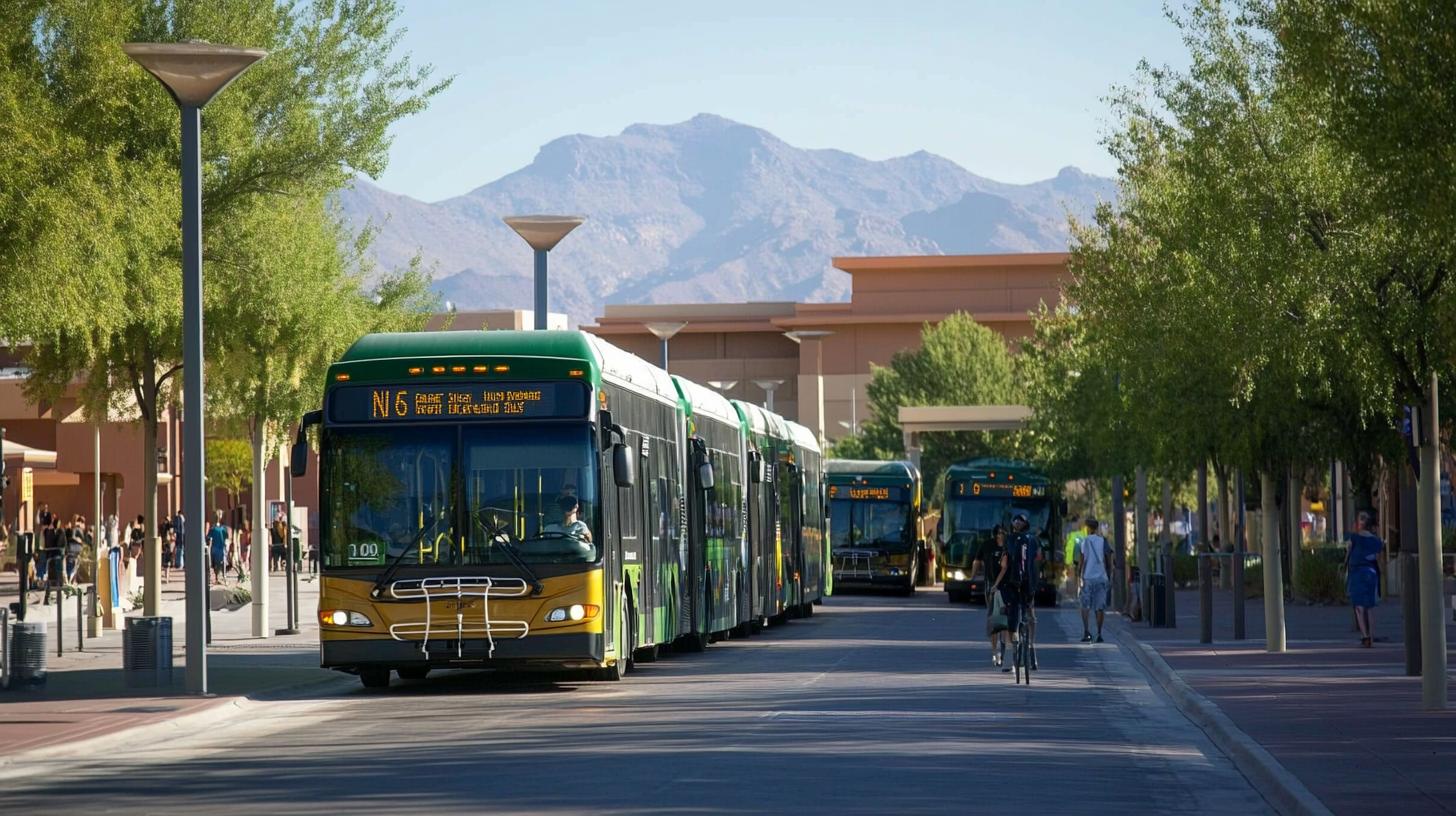In a significant move towards sustainable transportation, Northern Arizona University (NAU) is set to replace two of its diesel buses with state-of-the-art battery electric buses. This transition is made possible through a substantial grant from the U.S. Environmental Protection Agency.
NAU has been awarded an impressive $991,772 as part of the Diesel Emissions Reduction Act National Grants Program. This funding underscores the university’s commitment to reducing its carbon footprint and promoting environmental consciousness within the campus and the larger community. NAU is among a select group of three U.S. universities to receive this important funding, highlighting its role as a leader in sustainability efforts.
The grant aims to significantly reduce emissions associated with the university’s transportation system. With the shift from diesel to electric buses, NAU is expected to cut down on harmful pollutants, contributing to cleaner air and a healthier environment for its students, staff, and residents in the surrounding areas.
NAU’s leap into more sustainable transit options reflects a growing trend among educational institutions dedicating resources to environmental initiatives.
As the university transitions to electric buses, it sets a powerful precedent for others to follow, showcasing how campuses can actively participate in the global effort for a cleaner, greener planet.
How Electric Buses Are Powering the Future: Insights Beyond the Wheel
In the quest to revolutionize the transportation sector, institutions like Northern Arizona University (NAU) are taking bold steps towards sustainability by integrating electric buses into their fleets. This move is not just about reducing emissions, but it marks a significant milestone in the technology and infrastructure surrounding electric vehicles (EVs), potentially catalyzing broader changes across various domains.
Beyond the Environmental Benefits: Technological Innovations
While the environmental advantages of reducing diesel emissions are well-recognized, the introduction of electric buses also propels advancements in battery technology and charging infrastructure. The transition fosters research and development in high-capacity batteries that promise longer operational ranges, faster charging times, and greater efficiency. These technological improvements can trickle down to other industries, enhancing the viability of electric vehicles in multiple contexts.
Economic Impacts: Cost and Investment
Switching from diesel to electric buses is not without its financial implications. Electric buses have higher upfront costs compared to their diesel counterparts. However, lower maintenance requirements and energy costs can offset these initial expenses over time. This raises an essential question: Can institutions balance the budgetary constraints with long-term benefits? By investing in electric buses, universities like NAU are potentially paving the way for cost-effective sustainable transportation solutions.
The Controversy of Energy Sources
While electric vehicles are praised for their zero tailpipe emissions, the source of the electricity powering them remains a topic of debate. If the local grid relies heavily on fossil fuels, the environmental benefits of electric vehicles are diminished. Thus, the success of such initiatives depends greatly on the integration of renewable energy sources into national grids. Are we truly moving towards a greener planet, or just shifting the emissions further up the ladder?
Role in Educational and Community Engagement
NAU’s commitment to electric buses also provides educational opportunities, inspiring students and faculty to engage in sustainability projects and research. Such initiatives can foster a culture of innovation, where future leaders are equipped to tackle environmental challenges more effectively. Moreover, this engagement promotes community awareness and can lead to widespread adoption of sustainable practices.
Challenges on the Horizon
Adopting electric buses involves logistical challenges, including route planning to accommodate charging needs and ensuring maintenance facilities are equipped to handle new technology. Furthermore, training drivers and maintenance staff on the intricacies of electric buses is crucial for a smooth transition. How rapidly can these challenges be addressed to realize the full potential of this transition?
For those interested in following developments in sustainable transportation and technology, keep an eye on resources such as U.S. Environmental Protection Agency for updates on grant programs and innovations in emissions reduction.
In conclusion, while the transition to electric buses at NAU marks a significant step forward in sustainable transportation, it also opens the door to technological advancement, educational opportunities, and ongoing debates about the environmental impact. The journey towards a sustainable future is complex, but initiatives like these illuminate the path ahead.







